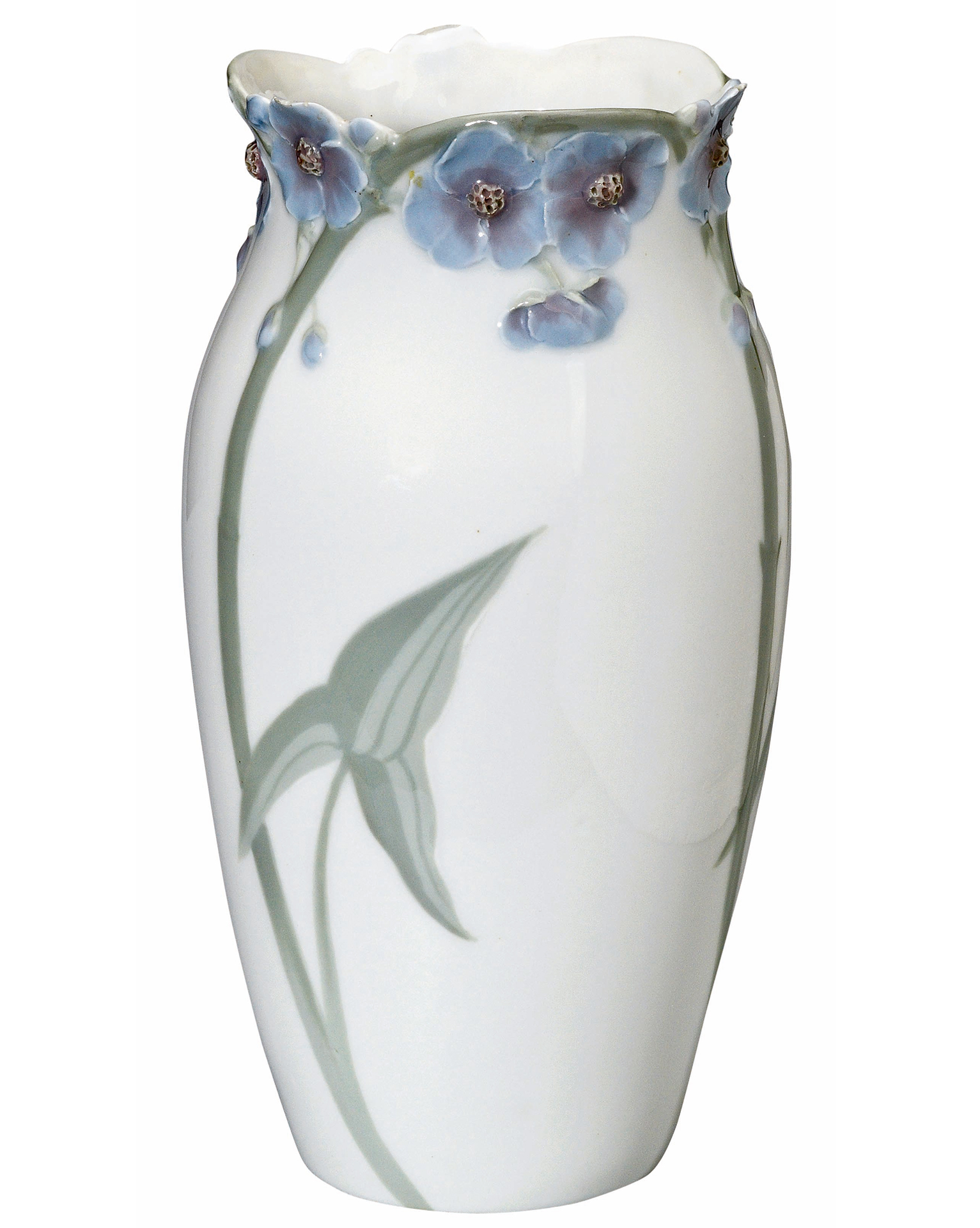The white gold of the north. Art Nouveau Porcelain
About the Exhibition
The third oldest porcelain manufactory in Europe (after Meissen and Augarten, Vienna) was located in Sweden, founded in 1726 in Rörstrand Palace near Stockholm. Around 175 years later, during the Art Nouveau period, the white gold from Sweden attained world renown with subtle underglaze painting and freely formed, naturalistic relief and openwork decorations of great sophistication.
The works were often based on designs by the painter Alf Wallander (1862 – 1914 Stockholm): Mermaids and mermen, medusas, crabs and other aquatic creatures, dragonflies, lizards, irises, tulips, a world of delicate flowers and leaves, flowing or bizarre forms.
The first exhibition in Germany on this theme is being held at the International Ceramics Museum in Weiden and includes outstanding examples of Rörstrand production around 1900 on the threshold to modernity, between historicist style pluralism and influences from Far Eastern ceramics.
An exhibition by Die Neue Sammlung and the International Ceramics Museum Weiden.

The exhibition is accompanied by the publication: “Rörstrand: Jugendstil-Porzellan aus Schweden // Art Nouveau Porcelain from Sweden”.
The Exhibition Poster